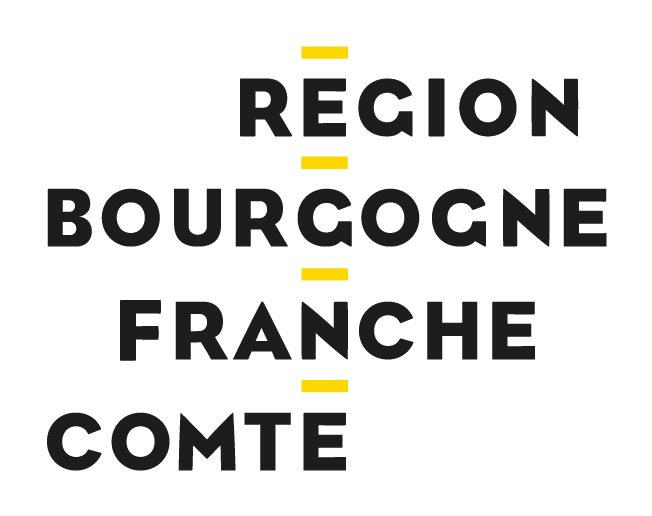15 June 2023 / Intelligence reports / Vitagora publication / Science and technologies
Vitawatch for June: your agrifood intelligence bulletin

Food and health, formulations and processes, consumer behaviour, food safety and packaging… Throughout the world, research teams are exploring innovative solutions for healthy, sustainable and tasty food.
In this month's Vitawatch Bulletin: a tropical hibiscus that improves nutritional value, an extraction method for antioxidant compounds from corn bran, a better understanding of neuronal processes in feeding, biodegradable polymers from carotenoids... and other subjects.
Food and health
Norwegian researchers show how Hibiscus sabdariffa can improve the nutritional value of foods
Carried out within Re-Food, a Norway-India joint project, researchers hav developed a novel formulation for a muffin integrating the extract of a tropical plant Hibiscus sabdariffa. The flowers of this hibiscus contain a number of beneficial compounds including polyphenols, flavonoids and betaine. Hibiscus sabdariffa extract is also rich in anthocyanins, a natural colorant ranging from red to blue.
This formulation produces a muffin with higher levels of antioxidants such as phenolic compounds. According to the authors, the study mainly shows the potential of plant extracts. Researchers were the muffin as a model for a proof of concept of the impact of formulation and the stages of manufacturing on the properties of the final product. Another advantage is the microbial shelf-life of the muffin, estimated at 6 days at room temperature.
Source: https://www.mdpi.com/2304-8158/11/24/3982
Consumer behaviours
E-commerce in French food leads to greater profit margins for some manufacturers and retailers
E-commerce has been growing for more than 20 years, in particular in the food sector. A study lead by the Institut Mines Telecom Business School in Evry and the Toulouse School of Economics (INRAe), using food purchasing data from French households, collected by Kantar WorldPanel, was analysed to determine the effect of the emergence of e-commerce on consumer behaviour and on wellbeing, as well as competition between manufacturers and distributers in terms of profit sharing.
The results show that consumer purchasing behaviour varies considerably between brick and mortar and online purchases. Demand in shops is less elastic than online. Despite an increase in prices in shops, e-commerce has overall increased the wellbeing of French households via a diversification of the offer. However, e-commerce is not so profitable for all retailers. Those that chose to develop warehouses geographically distant from their existing shops increased their profit, while those who added this service to their existing shops saw their profit fall. Finally, the results revealed that the development of e-commerce has a positive effect on profits of manufacturers in the alcoholic beverage sector, due to increased margins. The increase in negotiated wholesale prices between manufacturers and retailers can also be explained by retailers’ falling negotiating power due to the emergence of e-commerce.
Source: https://ageconsearch.umn.edu/record/324772
Scientists explain for the first time the neural processing sequence orchestrating feeding
The Shenzhen institute of advanced technology has carried out a study on the spontaneous behaviour during the eating processes in mice. By using video images aided by learning algorithms, the scientists have identified 14 characteristic movements that they divided into three categories: food, walking and environmental exploration.
The researchers have discovered that different neurons were activated according to various situations:
- ARCAgRP neurones activated when mice fasted with food in the environment, but the mice explored the environment rather than feeding. When they approached the food to eat, these neurones were inhibited.
- LHGABA neurones activated when mice initiated feeding behaviour. The length of activation was weakly correlated with the length of the feeding behaviour.
- DRGABA neurones continually activated during eating. The length of activation was strongly and positively correlated with the length of the feeding behaviour. The DRGABA neurones were inhibited when the mice stopped eating to explore their environment.
Humans present a fragmented food behaviour similar to that observed in mice and do not continually concentrate on the food during the feeding process but are rather constantly paying attention to their surroundings. Children play as they eat, while adults generally take part in social activities during meals.
"This study deepens our understanding of the feeding process and the neural regulation mechanisms, and provides new ideas for the investigation of feeding-related disorders," said Dr. WANG, the study leader.
Source: https://www.cell.com/neuron/fulltext/S0896-6273(23)00129-0
Visualising your last meal as more bigger than it was can reduce snacking behaviours
During an experiment lead by a team of Cambridge University, researchers evaluated the impact of memory of a recent meal on the amount eaten following the meal. 151 participants had lunch at the laboratory, then came back 3 hours later to carry out imagination tasks and to participate in a fake taste test of biscuits.
The results indicated that imagining your meal as more copious than it was in reality significantly reduces the amount of the biscuits consumed.
However, contrary to the hypotheses, remembering in detail a consumption episode did not reduce the amount of snacks eaten. It was also shown that imagining a recent meal as more copious than in reality did not lead participants to overestimate the true size of the meal. In fact, the group significantly underestimated the sizes of their portions. There were no significant estimation differences in any of the other groups. The results of this study suggest that the meal-recall effect can be an effective strategy to reduce food intake and may be amenable to strategic manipulation to enhance efficacy, but seems prone to disruption.
Source: https://www.sciencedirect.com/science/article/pii/S0195666322005025?via%3Dihub
Food formulation / process
Vegetarian school meals maintain nutritional quality and reduce greenhouse gas emissions: A case study in Dijon, France
Since 2018 in France, government regulations require school cafeterias to serve at least one vegetarian meal per week in order to reduce their environmental impact. This is in addition to previous regulations imposing guidelines on nutritional composition. However, a perception remains that a meat-free meal is insufficient to cover children’s nutritional needs.
A study lead by CSGA – the Centre for Sciences of Taste and Feeding (INRAe Dijon) – has evaluated the nutritional quality and the greenhouse gas emissions of vegetarian and non-vegetarian school meals in primary schools in Dijon. The meal service provided the composition of 249 meals served in 2019. The nutritional quality and greenhouse gas emissions were then determined based on a national database.
The nutritional adequacy of the meals for children aged from 6 to 11 years was estimated using the mean adequacy ratio (MAR/2,000 kcal) as the mean percentage of daily recommended intake for 23 nutrients and the mean excess ratio (MER/2,000 kcal) as the mean percentage of excess compared to the maximum daily recommended value for three nutrients.
This analysis showed that vegetarian and non-vegetarian meals both had a good nutritional quality with MAR/2000 kcal of 87.5% for vegetarian meals, and 88.5 % for non-vegetarian, and a MER/2000 kcal of 19.3% for vegetarian meals and 19.1% for non-vegetarian meals. However, the greenhouse gas emissions were double for meat-based compared to vegetarian meals (0.9 compared to 2.1 kg/CO2/meal). Indeed, it appears that increasing the frequency of vegetarian meals, more frequently serving recipes using eggs, dairy or vegan products, could reduce greenhouse gas emissions while maintaining an appropriate nutritional quality for school children.
Source: https://www.frontiersin.org/articles/10.3389/fnut.2022.997144/full#.Y0QnPWjzC4c.linkedin
A new method for extracting antioxidants nutrients from corn manufacturing by-products
Reserchers at KTH Royal Institute of Technology (Sweden) have developed a process for liberating dietary fibre rich in soluble ferulic acid contained in corn bran. Usually dumped or transformed into animal feed, corn bran could now provide nutritional value for human consumption. Using subcritical water extraction, the ferulic acid arrives in the gut in the form of a hydrogel, where it can prevent the oxidation of cells and improve gut health.
Hydrogels obtained in this way present a great potential for biomedical and nutraceutical applications thanks to the combined mechanical strength, their antioxidant potential and their biocompatibility, that can be exploited for wound healing, repairing damaged cells and targeted delivery of functional components (for example probiotics or medications) to the gut.
Source : https://pubs.rsc.org/en/content/articlelanding/2022/GC/D2GC03331C, Green Chemistry
Food safety / packaging
Carotenoids, potential ingredients for designing biosourced and biodegradable polymers
A research team at the universy of Toronto has studied the possibility of using carotenoid monomers to develop biosourced, biodegradable and conjugated polymers.
The researchers combined the carotenoid derived β-carotene, a C10 dialdehyde and p-phenylenediamine monomers, a group of compounds used in degradable polymers, to produce three different poly(azomethine)s. Once dried, the resulting materials varied in colour from black to bright red.
During the initial experiments, the team determined that the bright red version was the best candidate: the material decomposed completely to its original components in acid solutions. The process was even faster with the use of artificial sunlight. According to the researchers, the next stage is evaluating the capacity of this entirely biodegradable new polymer to conduct electricity.
Source : https://pubs.acs.org/doi/abs/10.1021/jacs.2c12668
Sustainable agriculture
Scientists test new organic alternatives to toxic pesticides
“Camo-cropping” is part of a system of crop protection against insect damage applied to beets, to prevent aphid damage. It involves spraying non-toxic fabrics or food dyes in beet fields to disguise the colour difference between the soil and the young plant leaves. The British Beet Research Organisation (BBRO) developed this technique with the support of Defra, within a product called ABCD of Ahid IPM.
Aphids are devastating pests for beet production and use the contrast of colours to make their home in the crops. The test starting this year will be repeated next year, explains David Jones, farm manager at the Morley Agricultural Foundation where the tests are being conducted.
This promises a significant potential to chemical solution, allowing to better preserve soils and increase plant resilience.
Source: https://www.ft.com/content/53563979-64ed-4132-911f-ae55c10bda32
Do you want to go further with your intelligence search?
If you are looking for intelligence on a specific subject (competitor research, scientific advances, innovations, start-ups etc), we can help you with a custom intelligence report. Contact us at: marthe.jewell@vitagora.com.




 Home
Home

















